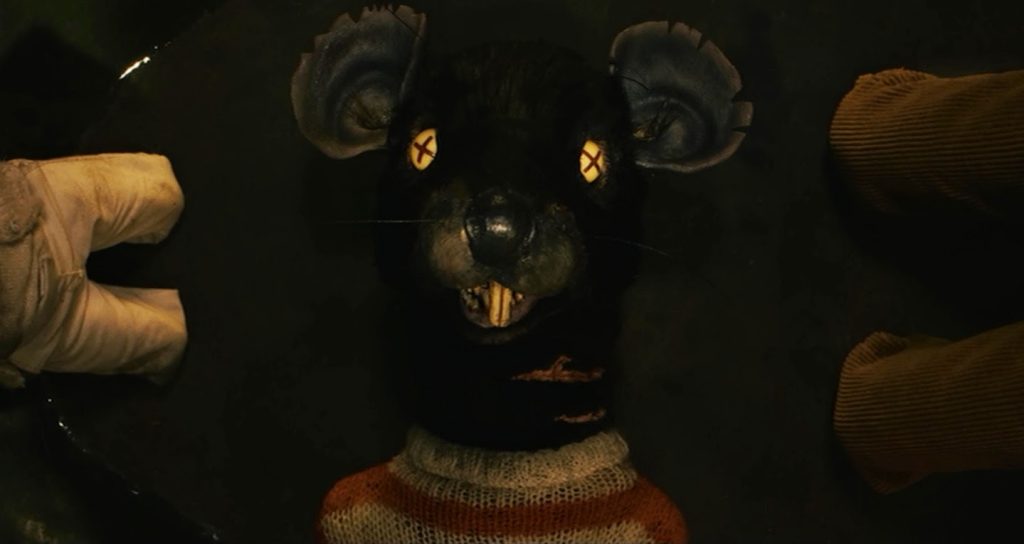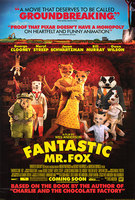
In his 2009 indie comedy, Fantastic Mr. Fox, Wes Anderson blurs the distinctive boundaries between the real and fictional presence of animals within the film. He creates tension between the real animal he is portraying and the anthropomorphised animal he has created in order to repurpose the way we think about animals. Rather than thinking of the animals in terms of binary opposites such as wild and tame or real and fictional, he gives us Mr. Fox and his companions who occupy a mid-ground between all of these. The film begins Mr. and Mrs. Fox trying to steal some squabs from a farm and almost getting caught.[1] Their dance with death and the announcement of Mrs. Fox’s pregnancy cause Mr. Fox to put his days of stealing behind him and get a job writing for a newspaper. Anderson uses Mr. Fox’s change in career to mirror the human expectations of parenthood which is that the focus should be on supporting your family. The film follows Mr. Fox’s struggle to find satisfaction in his new family-focused life as he misses the excitement and freedom of his old one. He is caught between the anthropomorphised expectations of him and his desire to be true to his wild animal nature. This raises the question; how should we consider Andersons ‘fox’ – as the real animal it is or as his fictional anthropomorphised version of one?

Anderson adds another dimension to this question which is that Mr. Fox seems aware of the struggle between the real and created version of himself in the film. This is epitomised in the scene when Mr. Fox kills Rat who was Mr Bean’s security guard in a fight. Throughout the film Rat took on the role of one of the bad guys but before he dies, he ‘redeems’ himself by giving up information to help Mr. Fox find his nephew. Mr. Fox reflects on Rat’s death and remarks “Redemption? Sure, but in the end, he’s just another dead rat in the garbage pail behind a Chinese restaurant”. Mr. Fox references both the anthropomorphised rat and the real rat all in one sentence. The rat is simultaneously a portrayal of the real and fictional version of himself as Anderson gives him the exclusively human sentiment of redemption whilst also reminding us that at the end of the day, it’s just another dead rat. In the real world rats are not security guards for turkey and apple farmers who guard special cider, they are pests whose death has very little significance on the world and Mr. Fox is aware of this. This perfectly captures the tensions in the animal world throughout the film. Mr Fox’s decision at the beginning is to either be the wild or ‘real’ fox he desires to be, or to be Anderson’s anthropomorphised version of a fox that his wife wants him to be. Anderson refuses to shy away from reality in this film and instead gives his audience a combination of the ‘real’ and ‘fictional’ versions of the animals he uses in order to blur the boundaries between real and fictional and to create more complex and dimensional characters.
[1] Fantastic Mr Fox. Dir. Wes Anderson. 20th Century Fox. (2009).
Bibliography
Fantastic Mr. Fox, Dir. Wes Anderson. 20th Century Fox. (2009).
Further Reading
Anderson, Wes, and Specter, Michael, The Making of Fantastic Mr. Fox: An American Empirical Picture by Wes Anderson, (Rizzoli International Publications, 2009)
Tobias, Scott, Fantastic Mr. Fox, The Dissolve, (2014) <https://thedissolve.com/reviews/570-fantastic-mr-fox/>